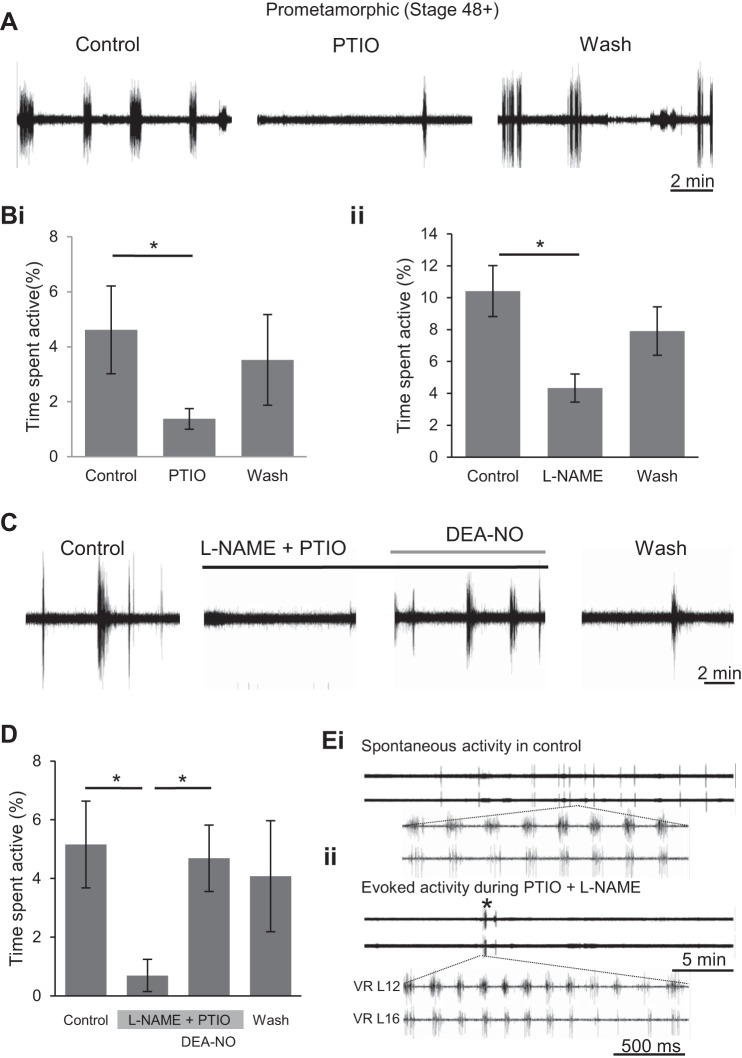Fig. 6.
Scavenging endogenous NO and inhibiting endogenous NO synthase (NOS) activity decreases fictive locomotion occurrence. A: VR recordings (VR L17) from a stage 55 tadpole before, during bath application and following washout of the NO scavenger PTIO (50–200 μM). Bi: pooled data of the mean time spent active in control, under PTIO application and during washout (n = 10). Bii: pooled data of the mean percentage of time spent active before, during and after application of the NOS inhibitor l-NAME (1–2 mM; n = 6). C: VR recordings (VR R18) from a stage 55 tadpole of locomotor activity following sequential applications of combined PTIO (100 μM) and l-NAME (1 mM), and then NO donor DEA-NO (200 μM). D: pooled data of the mean percentage of time spent active during the drug manipulations in C (n = 4). Values are means ± SE. *P < 0.05. E: during prolonged exposure to PTIO and l-NAME, spontaneous locomotor activity was generally completely abolished (c.f., top traces in Ei and Eii; also see C and D). However, the central pattern generator (CPG) network remained functional during this drug-induced silence since electrical stimulation of the optic tectum (* in Eii) could elicit episodes of rhythmic activity that were very similar from spontaneous fictive locomotion in control (c.f., bottom traces in Ei and Eii).

